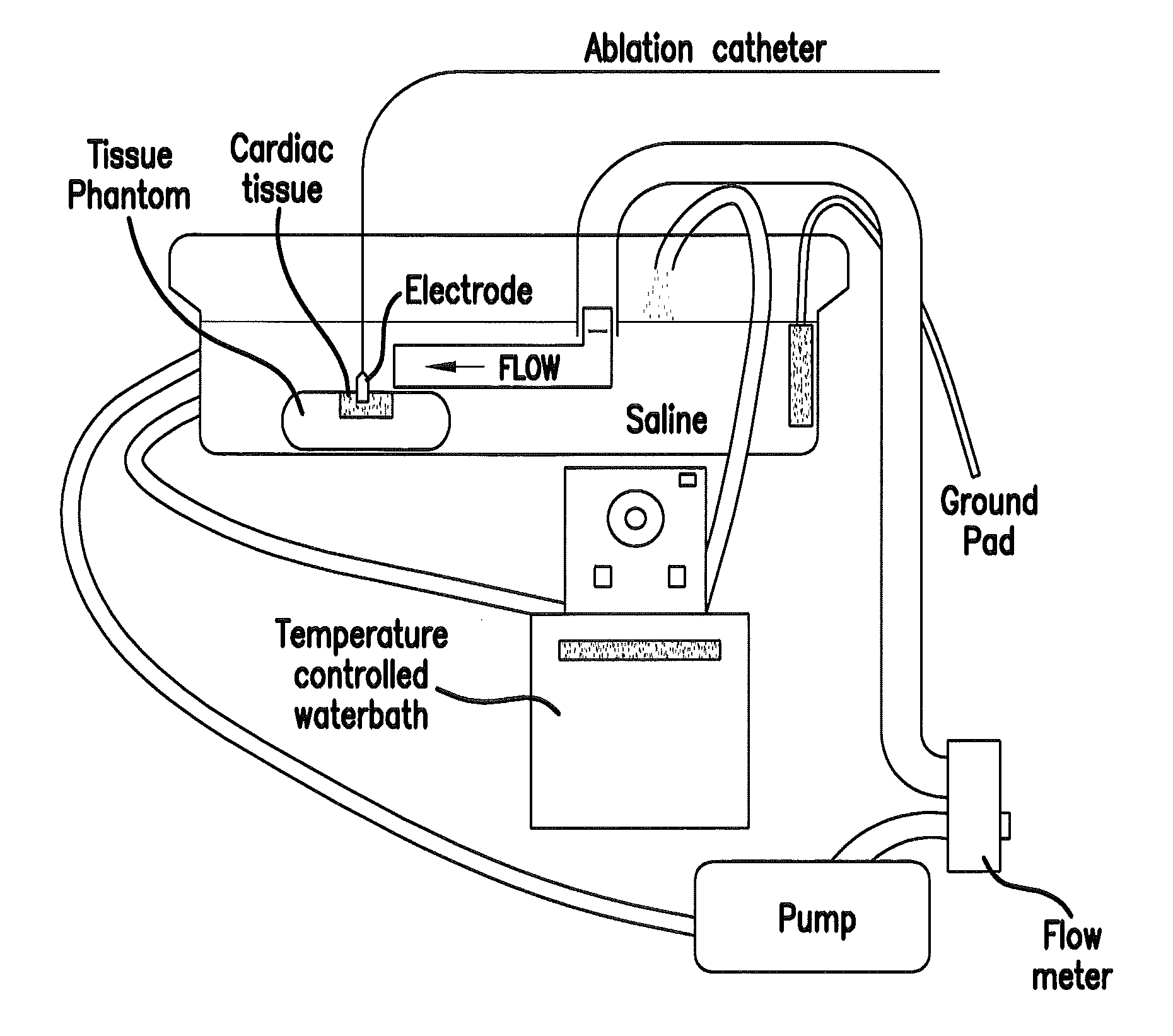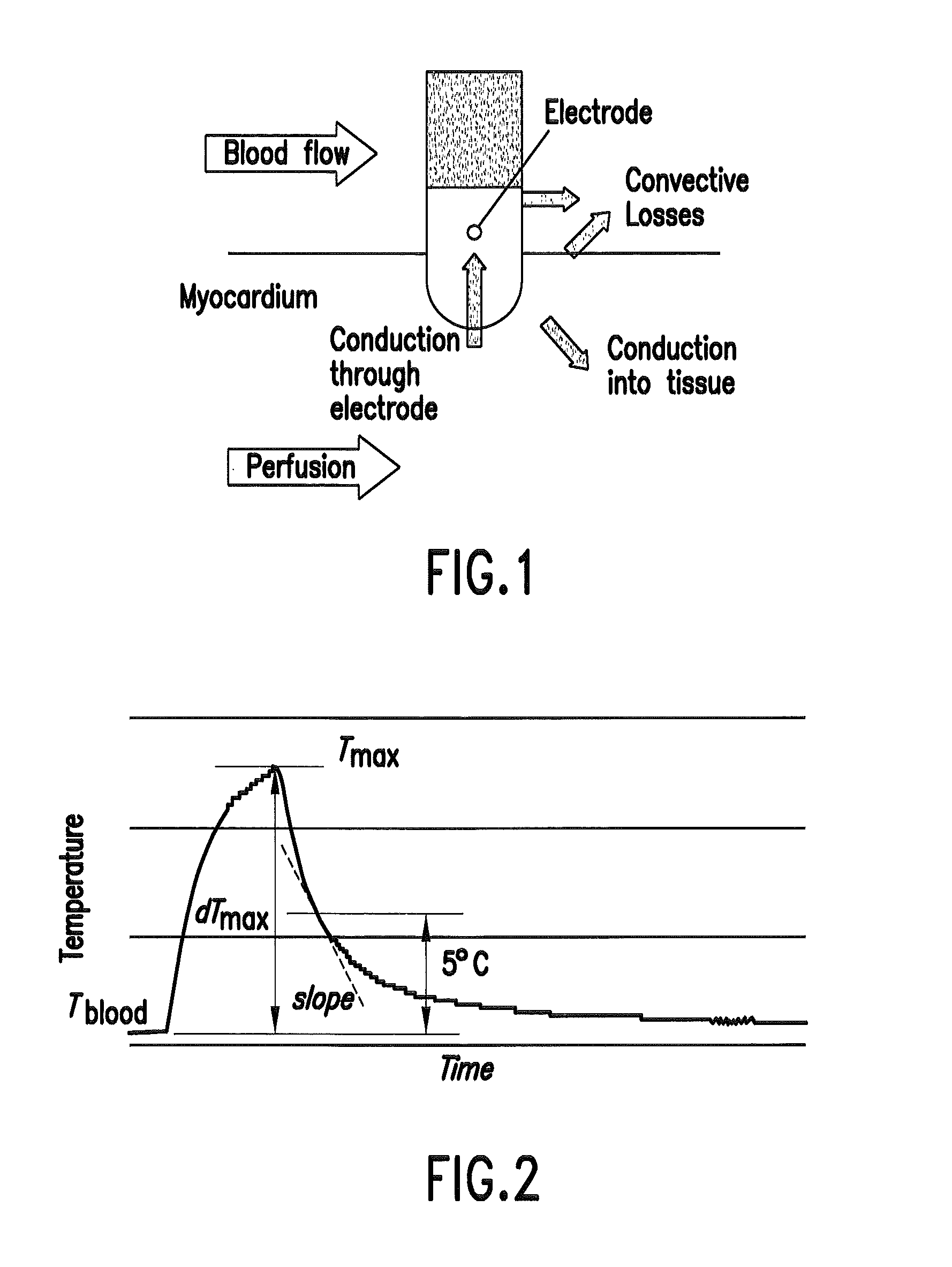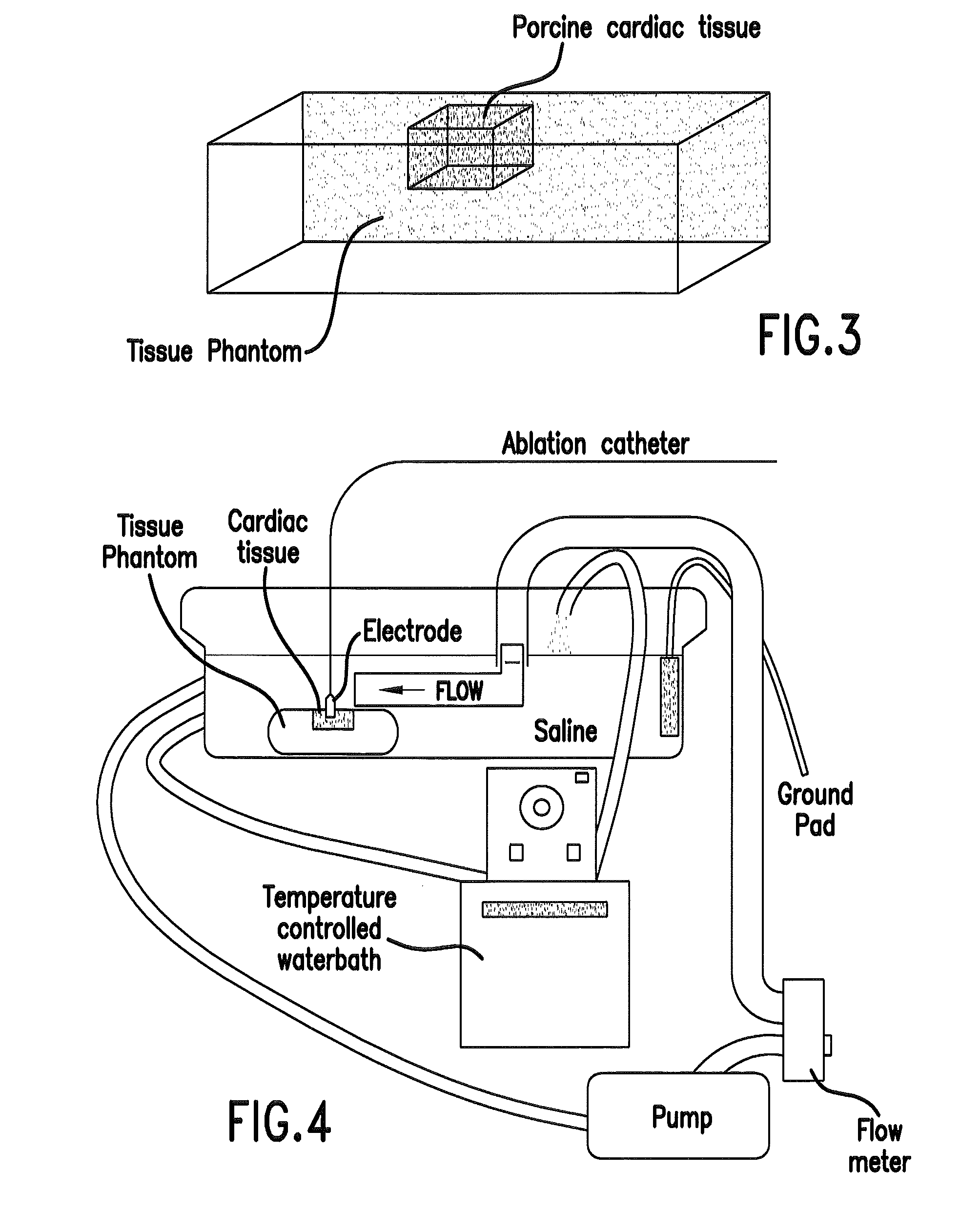Method and devices for cardiac radiofrequency catheter ablation
a radiofrequency catheter and catheter ablation technology, applied in medical science, surgical instruments for cooling, surgery, etc., can solve the problems of preventing effective delivery of current, and the site of origin of an arrhythmia that has not been successfully ablated, and may later become permanently nonfunctional
- Summary
- Abstract
- Description
- Claims
- Application Information
AI Technical Summary
Benefits of technology
Problems solved by technology
Method used
Image
Examples
Embodiment Construction
[0019]Cardiac radiofrequency (RF) catheter ablation has become the treatment of choice for a wide array of both supraventricular and ventricular arrhythmia. The dimensions of the lesion created during RF ablation depend on several factors such as catheter geometry, catheter-endocardial contact, and blood flow. Several studies examined the dependence of lesion size on blood flow [1-4]. Convective cooling by the blood carries away heat from the catheter tip and endocardium, enabling deposition of more RF energy deeper into the tissue. When RF power is not limited, higher blood flow can result in wider and deeper RF lesions. These results have been shown in ex vivo experiments [1, 3] and computer models [4, 5]. Similarly, in vivo experiments in a porcine animal model have shown that ablation site within the heart affects lesion size. Mukherjee, et al., classified different ablation sites in the endocardium according to flow conditions (low / medium / high), and found significant difference...
PUM
 Login to View More
Login to View More Abstract
Description
Claims
Application Information
 Login to View More
Login to View More - R&D
- Intellectual Property
- Life Sciences
- Materials
- Tech Scout
- Unparalleled Data Quality
- Higher Quality Content
- 60% Fewer Hallucinations
Browse by: Latest US Patents, China's latest patents, Technical Efficacy Thesaurus, Application Domain, Technology Topic, Popular Technical Reports.
© 2025 PatSnap. All rights reserved.Legal|Privacy policy|Modern Slavery Act Transparency Statement|Sitemap|About US| Contact US: help@patsnap.com



